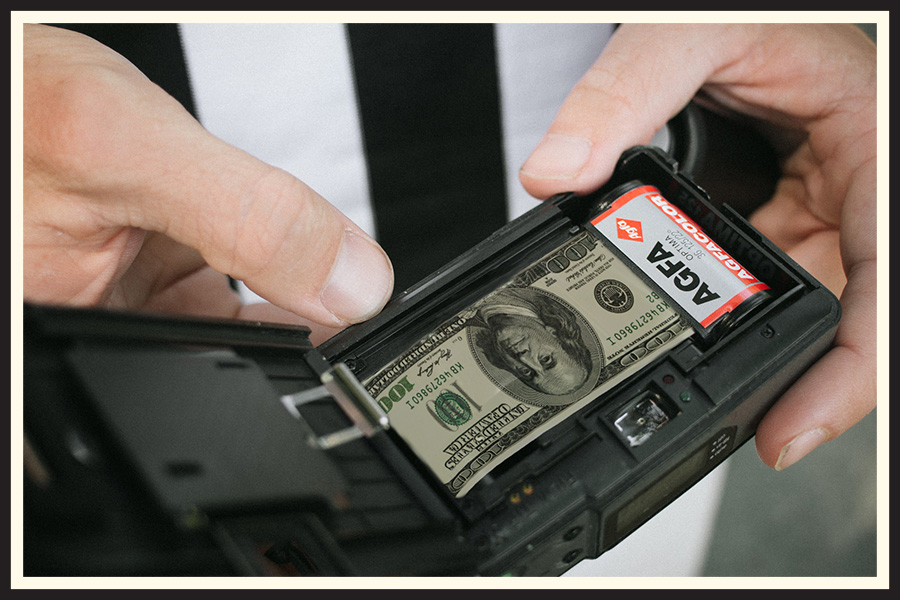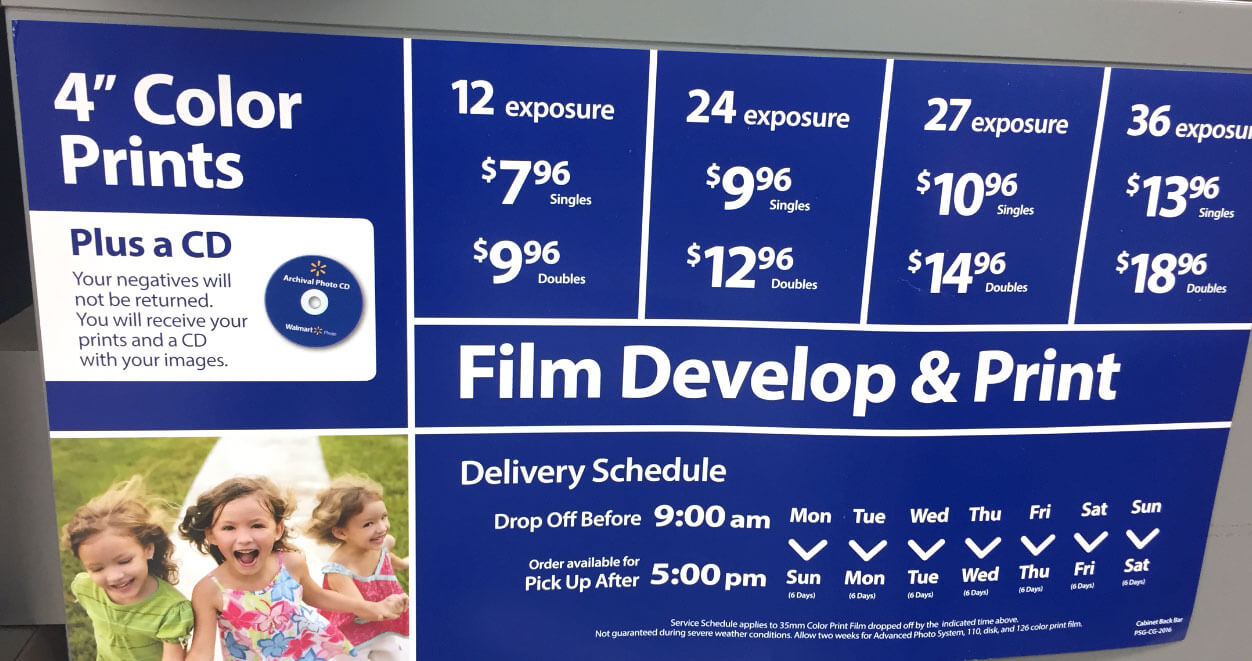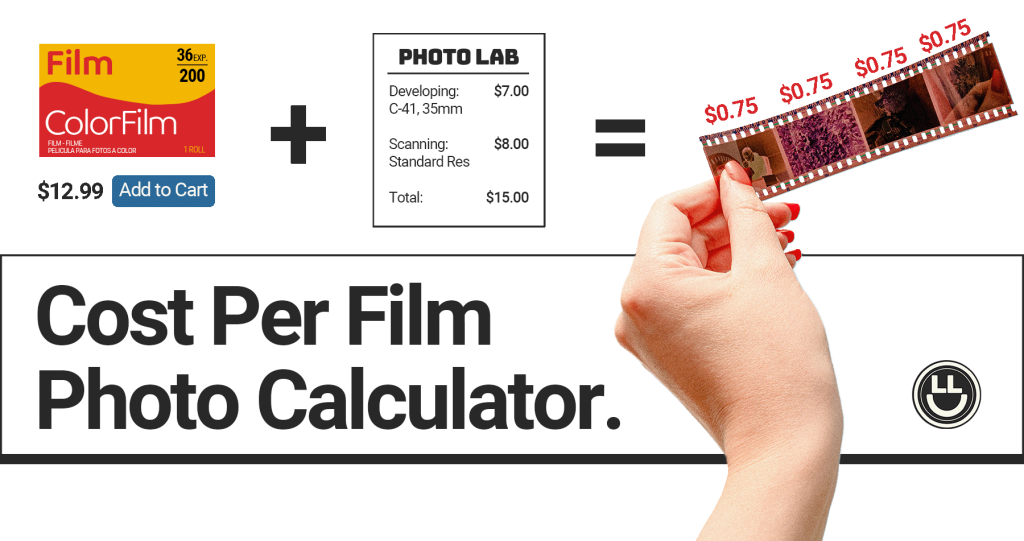The cost to develop film typically ranges from $5 to $15 per roll. Prices vary based on film type and processing speed.
Developing film is a task that requires precision and expertise, often harking back to the nostalgic era of photography. As digital photography has taken the forefront, the charm of film has not faded for enthusiasts and professionals alike. The price of developing is influenced by several factors such as the number of exposures, whether you need prints or scans along with development, and the choice between color and black-and-white film.
Many photography shops and online services offer film processing, with some providing additional services such as high-resolution scans and image restoration. With the resurgence of analog photography, the demand for film developing services has witnessed a revival, ensuring that those valued moments captured on film are brought to life with the utmost care and quality. Selecting the right service can make all the difference in preserving the depth and authenticity of your analog memories.

Credit: lenslurker.com
The Resurgence Of Film Photography
Once thought to be fading, film photography is making a comeback. Enthusiasts and professionals alike embrace the tactile nostalgia of rolling fresh film into a camera. The click of the shutter captures more than just images—it embodies a sense of history and skill. Let’s dive into the details that make film photography so appealing all over again.
Retro Appeal And Artistic Value
The allure of retro is undeniable. Film cameras offer a unique aesthetic that digital cameras struggle to replicate. The process of developing film involves anticipation and a hands-on approach that draws artists to this medium.
- Texture and depth in film photos stand out remarkably.
- Each shot requires more thought, often leading to better composition.
- Film’s unpredictability adds a layer of excitement and uniqueness to every photo.
Film photography is not just about taking pictures. It’s a craft that demands skill and patience, resonating with creators who value the artistic process as much as the final product.
Analog Vs. Digital In The Modern Era
The debate between analog and digital photography remains robust. While digital offers convenience, film provides an experience that feels more authentic. Let’s look at some comparing points:
| Film Photography | Digital Photography |
|---|---|
| Richer color depth | Instant result and sharing |
| Unique grain texture | Unlimited shots |
| Limited frames encourage mindful shooting | Easy editing and filtering |
Each frame of film tells its own story, with the colors and grains forming a distinct narrative—a stark contrast to the millions of images churned out daily by digital cameras.

Credit: thedarkroom.com
Factors Influencing Film Development Costs
Developing film captures moments in tangible form. Yet, various factors define the final development cost. Understanding these can help photographers, from novices to professionals, make informed decisions. Included are the film type and size, color versus black and white processing, and the economy of scale in film processing.
Film Type And Size
Film comes in diverse types and sizes, affecting development cost. Classic 35mm films typically cost less to develop than medium or large format films. Specialty films can increase the price due to unique chemical needs.
- 35mm – Most common and affordable.
- Medium Format – Higher quality, greater cost.
- Large Format – Best quality, premium price.
- Instant Films – Different processing, varied costs.
Color Vs. Black And White Processing
The choice between color and black and white can affect development expenses. Color film processing involves additional chemicals and steps, often leading to higher prices. Black and white processing, while simpler, requires separate systems, which not all labs have.
| Type | Cost |
|---|---|
| Color | Higher |
| Black & White | Often Lower |
Economy Of Scale In Film Processing
Developing multiple rolls can reduce the cost per roll. Film developing is a fixed-cost process, meaning that once the chemicals and machine are running, the cost to develop an extra roll is minimal. This economy of scale benefits those processing in bulk.
- Single Roll – Higher cost per roll.
- Bulk Rolls – Discounts may apply.
Selecting a film development service hinges on these key cost factors. Charting out needs against these can lead to cost-effective film development while preserving the quality of cherished photographs.
Diy Vs. Professional Film Processing
INTRODUCTORY PARAGRAPH
Film photography captures moments in a unique, vintage charm. Deciding whether to develop film at home or use professional services is a big choice. Let’s explore the costs and benefits of both DIY and professional film processing.
INITIAL SETUP FOR HOME PROCESSING
Initial Setup For Home Processing
Setting up a home darkroom requires some investment. Here’s what you need to start:
- Chemicals: Developer, stop bath, fixer.
- Equipment: Developing tank, film reels, thermometer, timer, dark bag.
- Darkroom basics: Safe lights, trays, enlarger (optional).
Costs can add up, but you pay them only once. Always prioritize safety when handling chemicals.
LONG-TERM SAVINGS OF DIY
Long-term Savings Of Diy
DIY processing can save money over time. The costs breakdown:
| Item | Initial Cost | Cost per Roll Afterward |
|---|---|---|
| Chemicals | $30-$50 | < $1 |
| Equipment | $100-$500 | $0 (reuse) |
With regular film processing, expenses decrease, making DIY a cost-effective option after the initial investment.
QUALITY AND CONVENIENCE OF PROFESSIONAL SERVICES
Quality And Convenience Of Professional Services
Professional labs offer high-quality, convenient service. Benefits include:
- Expertise: Skilled technicians ensure the best results.
- Equipment: High-end tools often not available for home use.
- Time-saving: No setup or cleanup needed.
While costs per roll are higher, many prefer the peace of mind that comes with professional processing.

Credit: www.belindajiao.com
Understanding Film Development Pricing
Welcome to the classic world of film photography! Beyond the allure of analog images, understanding costs is crucial. Film development might seem old-school, but its pricing nuances are as vital today as in the golden years of film. Let’s dive into the elements that dictate film developing prices.
Breaking Down Service Costs
Several factors come into play when pricing the film development process:
- Film Type: The cost can vary between color (C-41) and black & white films.
- Processing Time: Need it quick? Faster service often means higher fees.
- Prints or Scans: Deciding on digital scans or physical prints affects the price.
- Resolution: Higher resolution scans cost more due to the additional detail.
Some labs include a basic scan in their development price. Others may offer it as a separate service with distinct pricing.
Extra Charges To Watch Out For
Labs might add fees that increase the overall cost. Be aware of:
- Cross-Processing: Specialty processing comes at a premium.
- Push/Pull Processing: Adjusting ISO requires extra work, adding to the cost.
- Format: Medium format and 35mm film differ in development costs.
- Damage Surcharge: Films requiring special attention can incur extra costs.
Price Comparisons Among Leading Labs
Selecting the right lab is easier with a clear comparison. Here’s how top labs measure up:
| Lab | Color 35mm Dev + Scan | B&W 35mm Dev + Scan | Extras |
|---|---|---|---|
| Lab A | $12 | $15 | Push +$3 |
| Lab B | $14 | $17 | Cross-Process +$5 |
| Lab C | $10 | $12 | Medium Format +$2 |
The table highlights basic costs. Remember to account for shipping if you’re not dropping off film in person.
The Impact Of Location On Film Processing Fees
The cost of developing film can vary widely depending on where you live. Different regions come with their own set of processing fees, influenced by various factors including the cost of living, local competition, and services offered. Understanding these regional differences is key to managing your film development budget effectively.
Regional Cost Variations
Prices for film processing are not uniform across the board. In bustling metropolitan cities, the cost may be higher due to the increased overhead expenses. In contrast, smaller towns might offer more affordable services, but options may be limited. To get a better sense of the landscape, consider the following region-specific factors that impact film development costs:
- Local Economy: Areas with a higher cost of living typically reflect that in their film processing fees.
- Availability of Services: Regions with fewer labs may charge more due to less competition.
- Expertise: Labs with experienced technicians might price their services higher.
Benefits Of Local Labs Versus Mail-in Services
Choosing between using a local lab and a mail-in service comes with its own set of trade-offs. Here’s a quick comparison:
| Local Labs | Mail-In Services |
|---|---|
|
|
In essence, local labs offer a hands-on, personalized approach, often with the benefit of supporting your community. Mail-in services, on the other hand, might reduce the overall cost and offer a variety of services not available locally, despite the wait time for shipping.
Future Trends In Film Processing Expenses
Embracing the charm of analog photography comes with its own cost, namely film processing. What lies ahead for lovers of the classic film as we look towards the future? It’s important to understand the key elements that will influence the expenses associated with developing film in the years to come.
The Role Of Market Demand
Digital photography’s reign doesn’t spell the end for film. A resurgence of interest in film photography has been seen, particularly among enthusiasts and professionals seeking that authentic aesthetic. This niche but growing market demand will continue to impact the cost of film development services.
- Increased demand may lead to higher processing fees.
- Specialty films and processing may become more pricey.
- Limited supply of chemicals may drive costs up or down.
Technology Advancements Lowering Costs
Technological developments are playing a significant role in reducing film development costs. Automated processing machines and efficient chemical use have made film processing more cost-effective for labs.
| Technological Improvement | Impact on Cost |
|---|---|
| Automated Processors | Lower Labor Costs |
| Improved Chemical Formulas | Reduced Waste |
| High-Efficiency Equipment | Decreased Operational Expenses |
Predicting The Affordability Of Film Development
Forecasting the economic landscape of film development requires a nuanced approach. With factors like market demand and technological advances in play, predicting affordability comes with challenges.
- Demand stabilizes, leading to predictable pricing.
- Technology makes DIY development more accessible.
- Economies of scale could make professional services more affordable.
Frequently Asked Questions For Cost To Develop Film
How Much Does Film Development Cost?
Developing film can vary in cost, typically ranging from $5 to $15 per roll. Prices can increase if additional services, like high-resolution scans or prints, are requested.
Can You Develop Old Film Rolls?
Yes, old film rolls can be developed. It’s important to note that the quality of the photographs might be affected by the age of the film and storage conditions.
What Factors Affect Film Developing Price?
The price of film development is influenced by the film type, length (24 or 36 exposures), chosen resolution for scans, added services like prints, and the processing lab’s rates.
Is It Cheaper To Self-develop Film?
Self-developing film can be cheaper in the long run, but initial costs for equipment and chemicals are high. It requires time and skill to consistently achieve good results.
In Conclusion:
Understanding the film development costs is crucial for photography enthusiasts. Prices vary based on factors like film type, processing time, and desired outputs. Whether you’re a professional or a hobbyist, budgeting for these expenses can enhance your photo-taking journey. Embrace the art of film photography, and let your creativity flourish without financial surprises.
Keep snapping and enjoy the beauty of developed memories.


